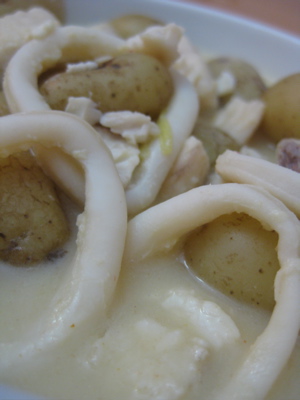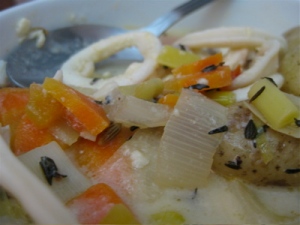I’m really big on customer service. I don’t mean that I need people surrounding me all the time, filling my glass of water after every sip, and folding my napkin across my lab when I return from the bathroom. I find that awkward actually. But its nice when you really enjoy a place not only for the food but also for the staff.
We once were patrons of Romano’s pizza, but they ruined a trust we had spent over a year building. We went almost every Thursday. When we would enter the restaurant there would be a bottle of our favorite wine waiting for us at our regular table. One night last summer, after ordering our usual, Elmer brings us the check. The price of the bottle had increased almost doubled, yet we were not informed. We expressed our disappointment that he didn’t at least inform us of the change before opening the bottle. We haven’t returned since. (We’re good at grudges).
La Boqueria de Barcelona Viva has in some ways replaced Romanos. While we can’t afford to go there as frequently, it holds a special spot in our heart, mainly because of Oscar, our waiter. We went to La Boqueria for the first time last year for my birthday. Actually the day after my birthday, because on my actual birthday I had to work. (And it was a Saturday. Yes I’m still bitter.) So Hec took me out the next day. Oscar waited on us, bringing us complementary pan tumaca, made some recommendations on his favorite menu items, and didn’t bother us every second asking if we wanted to order something else when we just came for the sangria and marinated mushrooms. Since this first wonderful expereince, we continued to come back. Usually just for the sangria and pan tumaca, although on special occasions we’ll order the lechón, paté (for Héc, not me!), or one of their unique desserts such as pears in cognac. But even though we don’t always spend $50 (usually its well under $20), Oscar greets us with a huge smile, is glad to see us, and even gives away little cooking tips. He told us what was in the sangria, and also how to prepare pan tumaca. At another Spanish restaurant we visited (thinking it was the same everywhere) we asked the waiter how they prepare the sangria (we didn’t want to pay a lot for wine-flavored juice). “Sorry,” he told us, “it’s a secret of the house”. Which to us meant it was boxed cooking wine with grape juice and sliced up apples and oranges. And thats certainly what it tasted like. We had to order another cup of wine to mix in to the pitcher to take the edge off the sweetness.
When we asked Oscar if the sangria was sweet, he basically recited the recipe, verifying for us that it was not just grape juice. He told us the liquors used, approximate amounts, and the fruit juices. I was surprised, to be honest. We went home immediately and experimented. While it is never the same as at La Boqueria, it is always good…sometimes even better that at the restaurant.
Now Sangria is not an exact science, although I would say it can be an art. (Asá). Use the things you like, and it will turn out delicious. Thats all we do. If you want it light, use less alcohol, add some sparkling water. If you want it heavy, up the brandy and gin. Go white, go red. If you just have rum and nothing else, go for that too. This is what Oscar told us, and this is generally how we base our recipe:
Oscar’s Sangria
Ingredients:
1 bottle wine (we just use a cheap drinkable something red).
2 oz brandy
2 oz gin
1/2 to 1 cup juice (orange or pear are yummy)
1 cup diced fruit (citruses are great, ripe pears, berries, ect)
1/2 lime, slicedDirections:
Mix all together and let sit at least over night. Sometimes we let it sit a couple days. The fruit really absorbs the wine, and makes a nice snack at the end of the pitcher.
Filed under: Drinks and Beverages, Restaurants | Tagged: Alcohol, Brandy, Drinks, Fruit, Recipes, Wine | Leave a comment »












 We made the short drive from the University to Boulevard Los Proceres, where the little Italian joint is located. The parking situation did not fill me with confidence, as the restaurant is located on busy, therefore high crime zone. Generally we avoid parking on the side streets in this area. A nice restaurant or business will have a small lot with a
We made the short drive from the University to Boulevard Los Proceres, where the little Italian joint is located. The parking situation did not fill me with confidence, as the restaurant is located on busy, therefore high crime zone. Generally we avoid parking on the side streets in this area. A nice restaurant or business will have a small lot with a